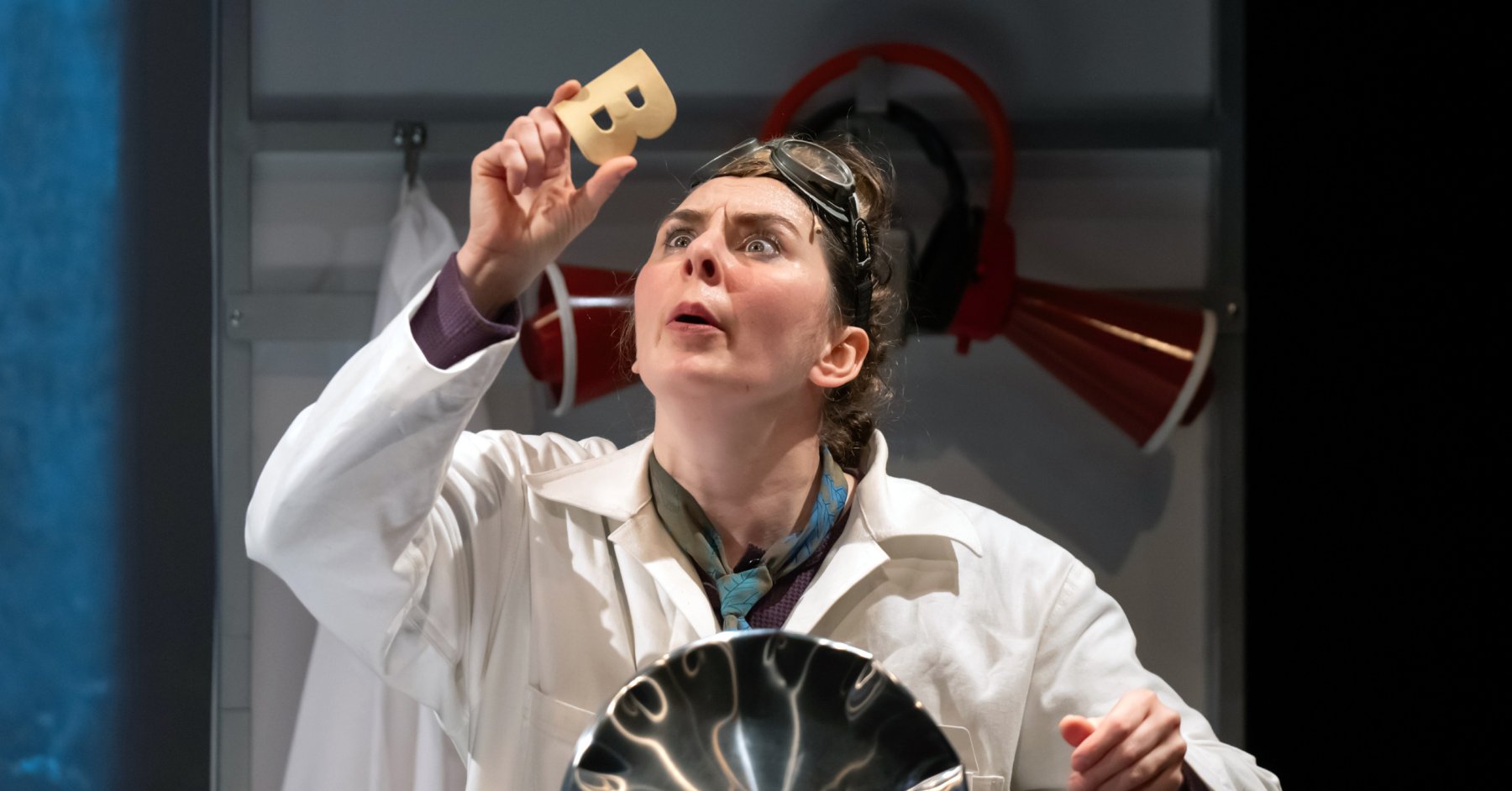
“The Meaning is in the Pleasure of the Sound”
Playwright and Actress Autumn Ness on Communication, Children’s Theatre, and Babble Lab
For playwright and actor Autumn Ness, theatre has been “the passion” since she was young. “I think I got started the way most people do, just loving big stories and playing through them in my head.” She’s always taken creative liberties with the art, which explains a choice she made at her very first audition when she was eight years old — Hansel and Gretel, coincidentally at Children’s Theatre Company.
“They gave us a little side to read, and I took one look at it and decided, ‘This isn’t what they need to see,’” Ness says. “I knew Hansel and Gretel was a scary play, and I thought the director should see how well I can be scared. So when it was my turn to stand in front of the director’s table, I put down the sides, opened my mouth, and screamed as loud and as long as I could. And everyone behind the table laughed. And I thought, How dare they?! Don’t they know this is important to the play? They called a few days later, and I had gotten the part. I can only imagine why they chose the little girl who clearly needed an exorcism!”
Since she started her career in theatre at Children’s Theatre Company, Ness was elated to write the script for Babble Lab. In a world where children’s theatre gets unfairly assessed and seems “somehow diminished or lesser than, ... it’s so important to write quality work for children and families!” Ness says. “Theatre for youth and families is where it’s at right now. I think of Naomi Iizuka and Cheryl West in America, and Shonna Reppe and Bodil Alling overseas. Making such real and artful work without a nod to it being somehow for a younger audience.”
To bring the script to fruition, Ness acknowledges that they could have “thrown some random letters on the floor.” Instead, she drew inspiration from the Dada theatre movement and sound poetry, especially the poem Ursonate by Kurt Schwitters. “It’s about 25 pages of nonsense words, but it’s a thrilling read!” It seemed a perfect fit to help her on her journey into the lab for Babble Lab.
She also traveled to the Netherlands to study under Jaap Blonk, who she describes as “the world’s greatest authority on sound poetry.” Under his tutelage, she learned to not make the sound poetry “somehow be a disguise for true meaning. The meaning is in the pleasure of the sound. That’s a very hard lesson for a control freak Virgo like me!”
When the time came to start to bring the production to life, Ness “wrote some very basic puppet and static projection interactions” because she knew she “wanted these words and sounds to be the other characters in the play. Then Projections Designer Jorge Cousineau joined the project and “basically opened up the sky with what he’s capable of.”
Since there weren’t any more limits to the animation interactions they could have, they spent the first three weeks of rehearsal playing with live animation as they worked before solidifying what they wanted it to look like. After that, they practiced the timing relentlessly, getting the precision just right so that all the interactions between The Scientist and the animations would be as satisfying as possible.
Due to the unpredictability of the show’s audience, they had to break each animation up into very small sections so that The Scientist can respond in real time to what the audience gives her. The final product has upwards of four hundred cues. “Our Stage Manager is Wonder Woman,” Ness says.
In developing this project, Ness could barely contain her excitement, failing to “play it cool” at production meetings as the designers worked their magic. “It’s so humbling to have teams of people wanting the show to be exactly what you need,” says Ness. “I was so happy when we began previews and the shops and artistic team could sit amongst the kids and see their reaction to what had been built. I hope they felt like their hard work was worth it when they heard the kids’ reactions.”
Ness also pulled from her personal experience of watching her own children’s developmental journey to develop this script. “Their road to communicating was not smooth,” Ness explains, “as is the case for so many families. Talking, learning their letters, reading, writing. When you picture these childhood milestones, you think of joy and success. You never predict that getting to a milestone has tears and worries and fears.”
In addition to being entertained, Ness hopes that audiences can walk away learning something about what it means to make mistakes and learn from them. In Babble Lab, The Scientist makes a discovery after making a mistake, which leads her to more discoveries while also battling the consequences of the mistake she made.
“What does it mean to have words?” Ness asks. “Words can make people laugh, but they can hurt. Words can get out of control. You can have the biggest vocabulary in the world and still not be able to say what you mean or what you are feeling.”
As The Scientist goes on this journey alongside the youngest audience members, they observe as she learns how to get her needs met, express herself, and connect with others.
“I hope audiences recognize that the journey to using our own voice is difficult, and that we make mistakes in figuring out how we want to use that voice,” Ness says. “But it’s so important kids know that there is no one in the world who has their same point of view, and they have the power to express themselves and be heard.”
Performances of Babble Lab will take place June 22 – July 28, 2024 on the Hertz Stage.
Meet Our Generous Sponsors



